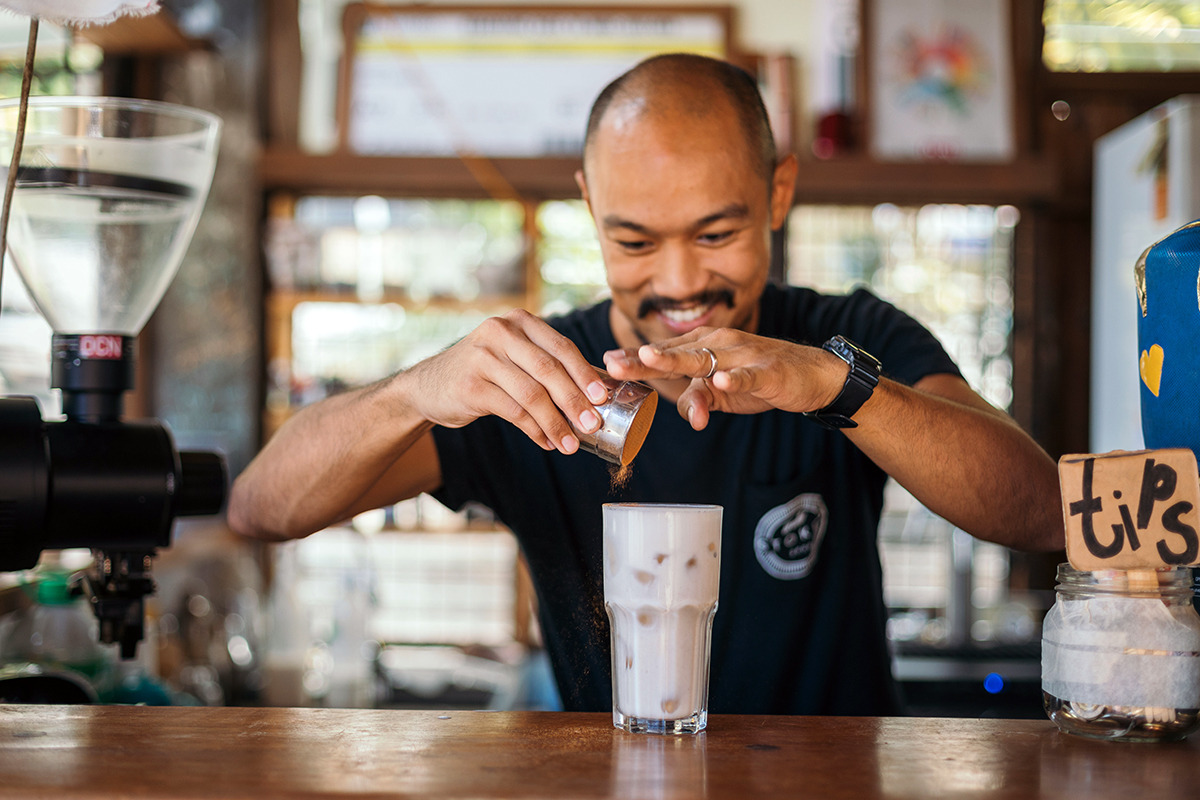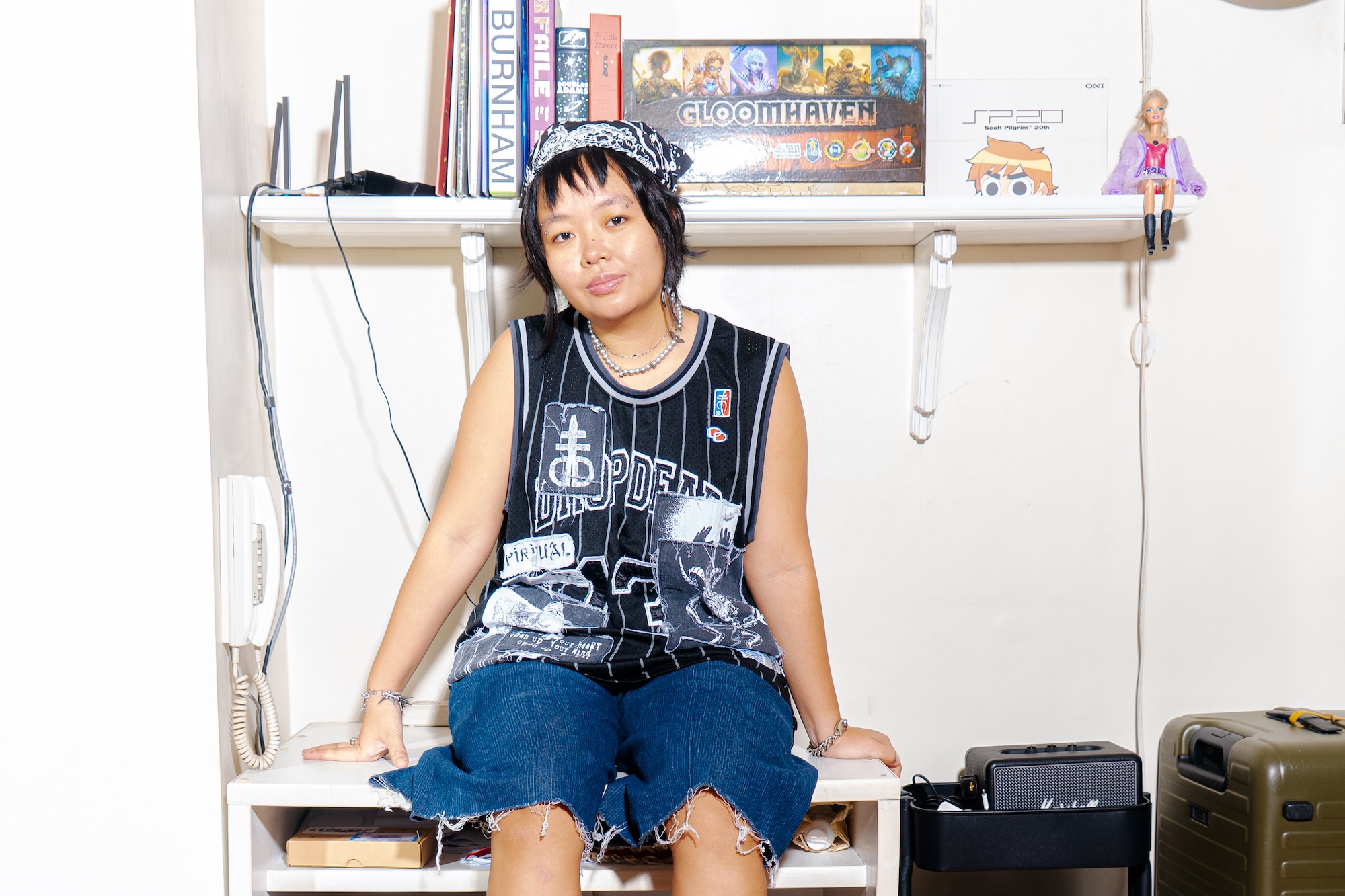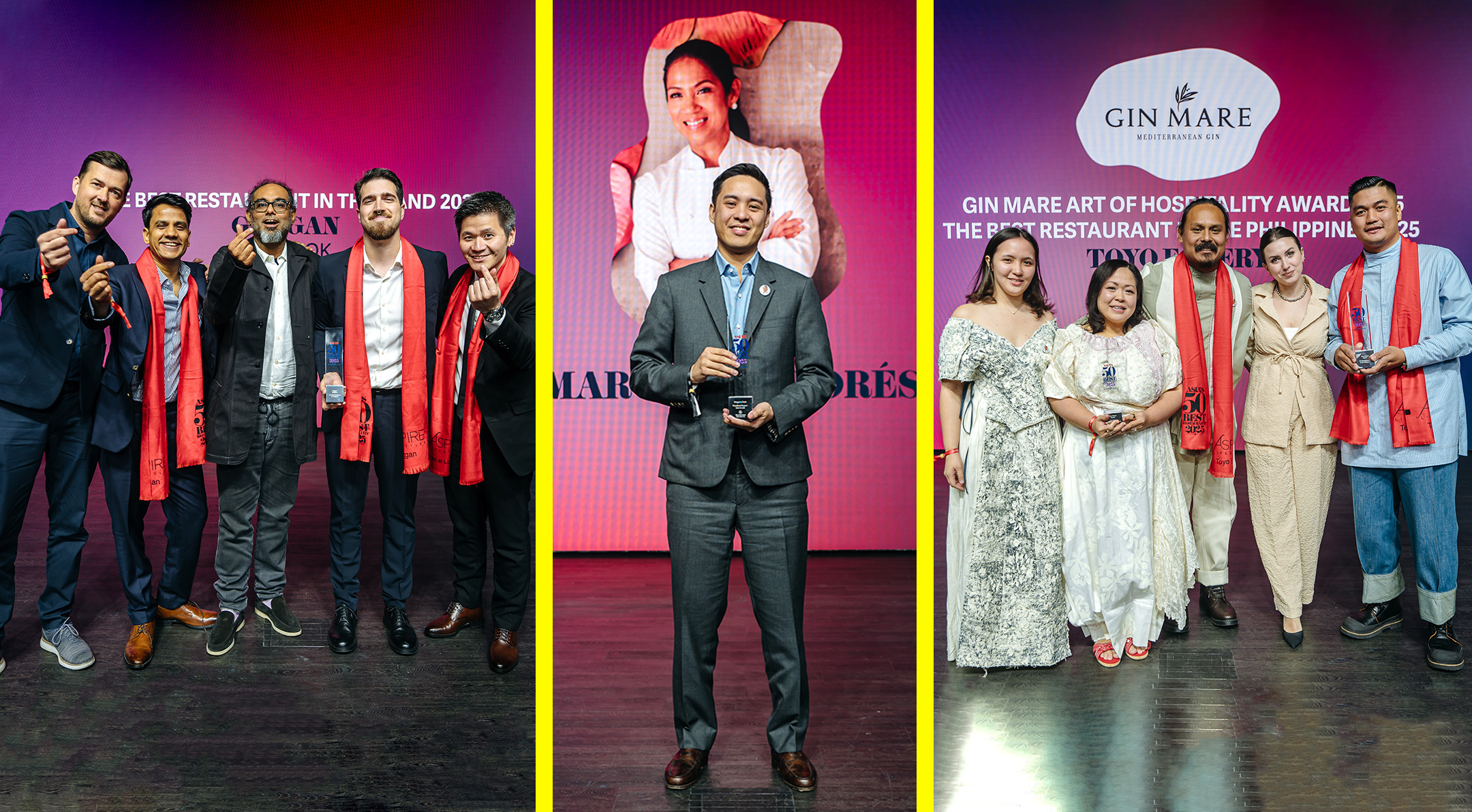Nitro-charged horchata, handcrafted chocolate, fresh smoothie bowls, and a retro boutique hostel are driving the F&B boom in La Union
Between surfing and making coffee at his landmark El Union Coffee shop in La Union, Kiddo Cosio had time to participate at this year’s Madrid Fusión Manila, where he presented a nitro-charged version of homegrown favorite Dirty Horchata, a sexy concoction of rice milk, vanilla extract, and cinnamon seamlessly ebbing and flowing with almond essence and espresso.
“Taste it,” Cosio says, as he places the masterfully crafted beverage on the bar. One couldn’t help but feel that this emotional, enjoyable drink is reflective of the wider changes happening in the sleepy municipality of Urbiztondo in San Juan, La Union.
At once balanced and eclectic, La Union’s emergence as a charismatic yet underrated surf destination into a burgeoning hub dancing to the beat of its own drum is not as unforeseen as one would imagine. The scene in San Juan feels like a sitcom, straight out of a “Friends” sequel, only in a seaside setting and without the hooking up, its creative heart spurred by a common storyline shared among most of the town’s transplants.
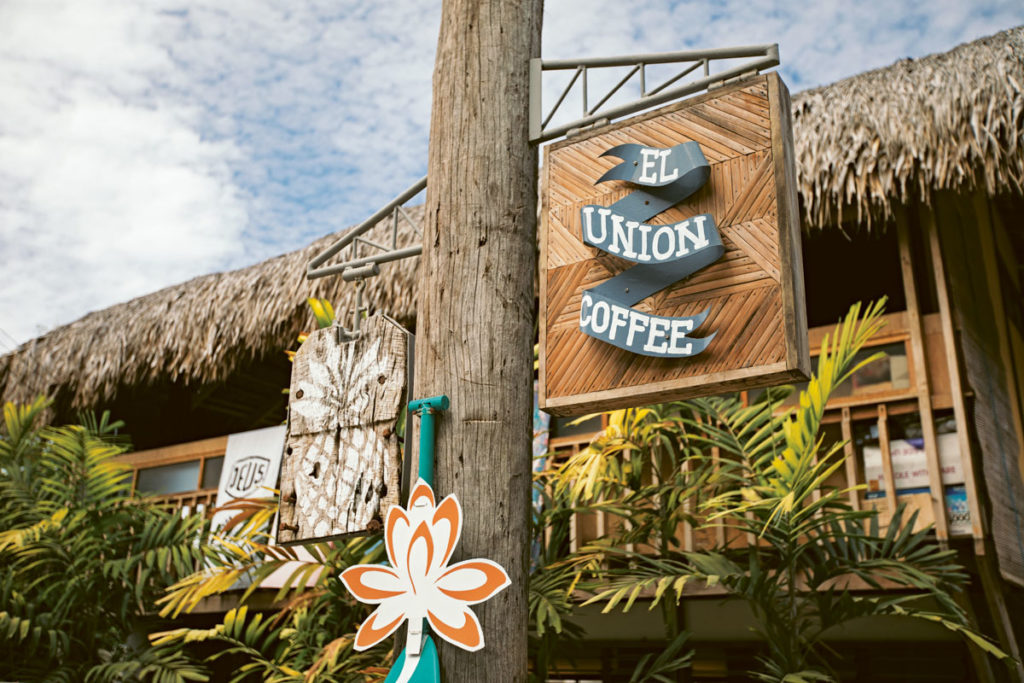
“What makes La Union charming is the community itself,” says Raffy Castillo of smoothie bowls bar Makai Bowls. “You know the guys who do coffee and the people at Flotsam and Jetsam Hostel. These are the same people you hang out with, go surf with, or do yoga with.”
“If you walk down this little surf strip, they call this surf town now, from the border of San Juan to Bacnotan, you’ll notice that food and beverage is happening. Why? Development is pointing in this direction,” says Kiddo Cosio. “Another is because La Union is just a really cool place to visit. There’s a great community that powers this town. They care about food and beverage and the environment”
To think that it all happened within the space of a couple of years is all the more impressive. Today, it’s home to a good population of outsiders—Manileños and foreigners alike—chasing the coastal lifestyle in a town on the verge of breaking through.
“If you walk down this little surf strip, they call this surf town now, from the border of San Juan to Bacnotan, you’ll notice that food and beverage is happening. Why? Development is pointing in this direction,” says Cosio. “Another is because La Union is just a really cool place to visit. There’s a great community that powers this town. They care about food and beverage and the environment.”
Crafty company
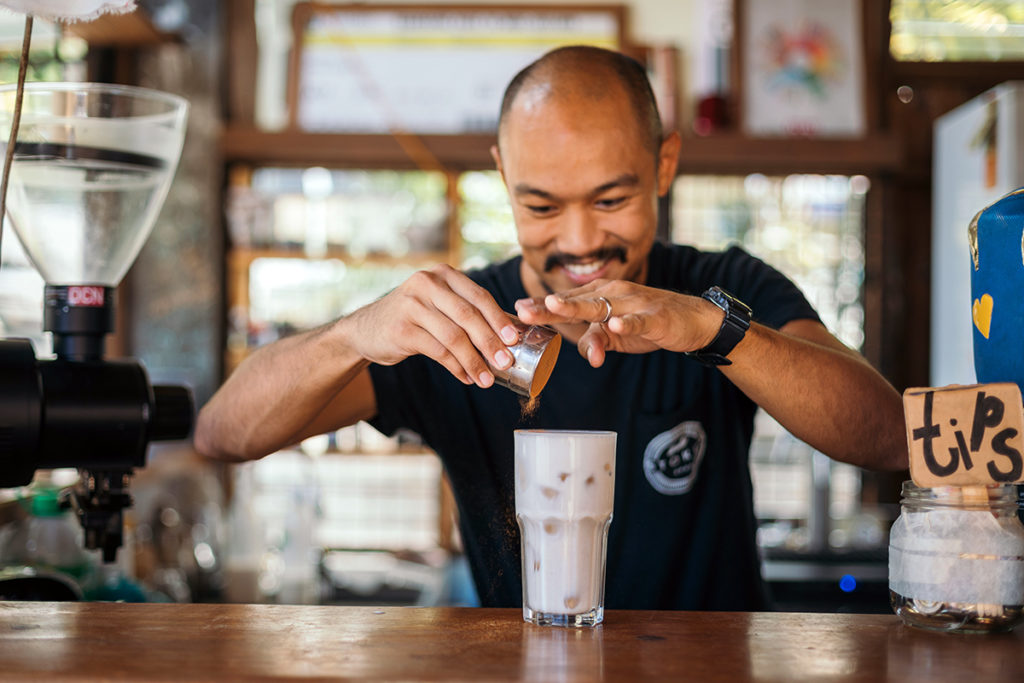
Although El Union Coffee is one of the earliest settlers in San Juan, it doesn’t feel antiquated. In fact, it’s a good place to start to get a better handle of La Union’s F&B growth.
El Union Coffee is an independent café that has eased into a bigger, almost entirely open bahay kubo-like space since its inception in 2013. With its sturdy wooden tables, patterned flooring, piles of old magazines, coffee bean fragrance in the air, and little corner of vinyl records sold by one of Cosio’s baristas, the café’s bare comfort tips its hat to Instagram. But beyond the caffeinated aesthetics, a forward-thinking culture is the unifying element here.
“Culture really comes from the stakeholders. We’ve just been very intentional to hire people who understand what we’re doing. We work with people who care about quality, the community, and La Union because from that comes the culture.” Cosio clearly understands the pulse of La Union’s F&B boom almost four years on. He’s not changing the core values of coffee; instead he’s settling into a kind of flow that he can call his own, even if that means relearning how to run the business in an ever-changing market.
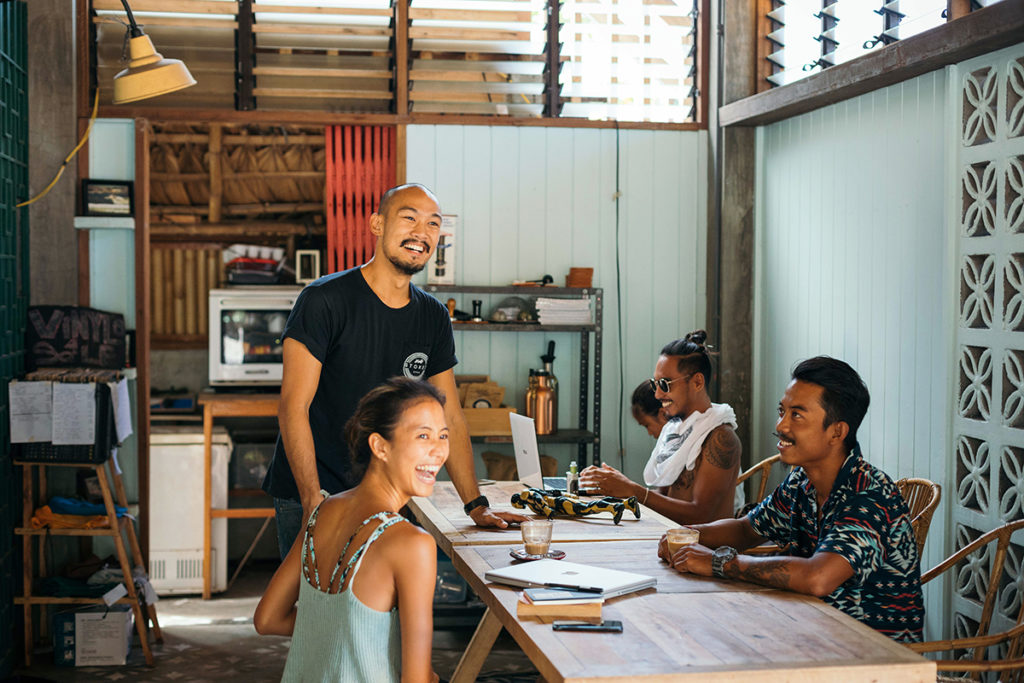
“We want consumers to know how we do things, the name of the farmer, and the community that produces the coffee,” he says, noting that Panama accounts for a major portion of their coffee beans, thanks to partner Sly Samonte, formerly of Craft Coffee Workshop. “We don’t source only Filipino beans although this year that’s what we’re most excited about.”
Locality apparently is the new defining feature of the province’s flourishing food scene. “We just came from a wild forest robusta farm in Negros. Bea Misa-Crisostomo invited us over, and Sly and I went during the last harvest this year to experiment on some new fermentation and processing methods that could potentially increase the quality of their coffee.” Cosio’s milk also comes from two towns away from Bolong’s Farm in Bacnotan. “I think they’ve worked with the Department of Agriculture as well to get this hybrid cow that can produce milk but also survive the tropics.”
Bean around the world
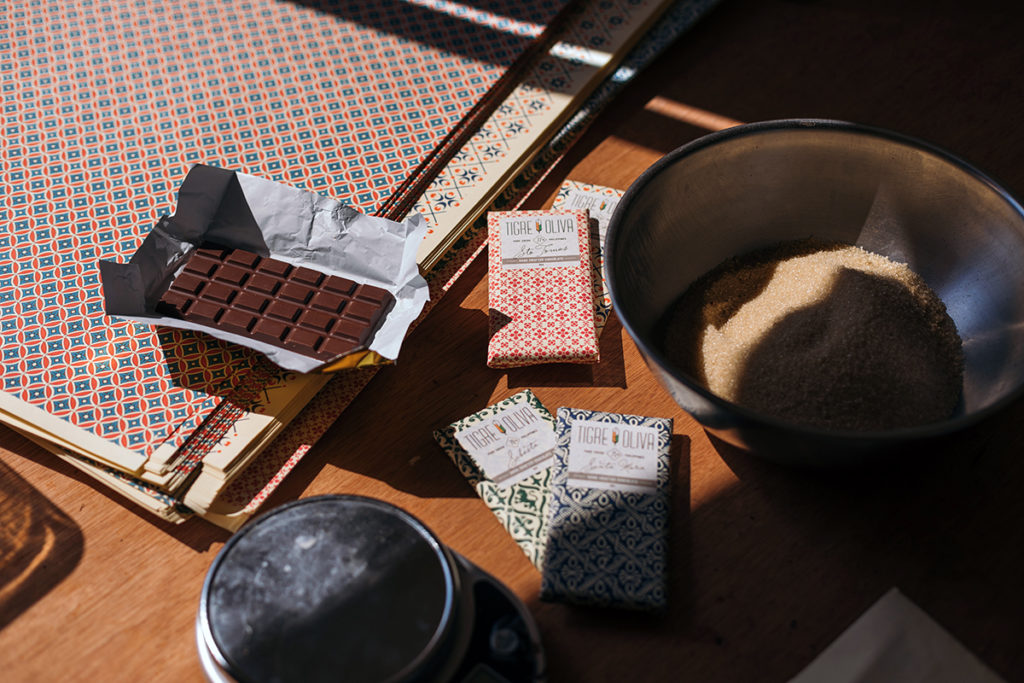
Another man who exemplifies the same laid-back and local mindset is Simone Mastrota, an Italian who has spent the past few years cultivating a career in photography in the US but has since redirected his attention to making chocolates through Tigre y Oliva, which takes its name from his two daughters. “We were trying to start something in Europe but it wasn’t the right moment over there,” he says. “It’s harder because cacao isn’t grown there. The kind of investment you need to start is way higher. Here, you just throw a seed somewhere and there will be people who will want to be part of that. I felt that kind of energy.”
That spirit of adventure and spontaneity to put down roots in a place like La Union makes Tigre y Oliva’s bean-to-bar chocolates the most deeply personal endeavor Mastrota has undertaken. One could easily get a sense of this in the way he explores the limits of Philippine cacao origins and enforces it with his Italian heritage through carta varese, a traditional wrapping paper made in his hometown of Varese.
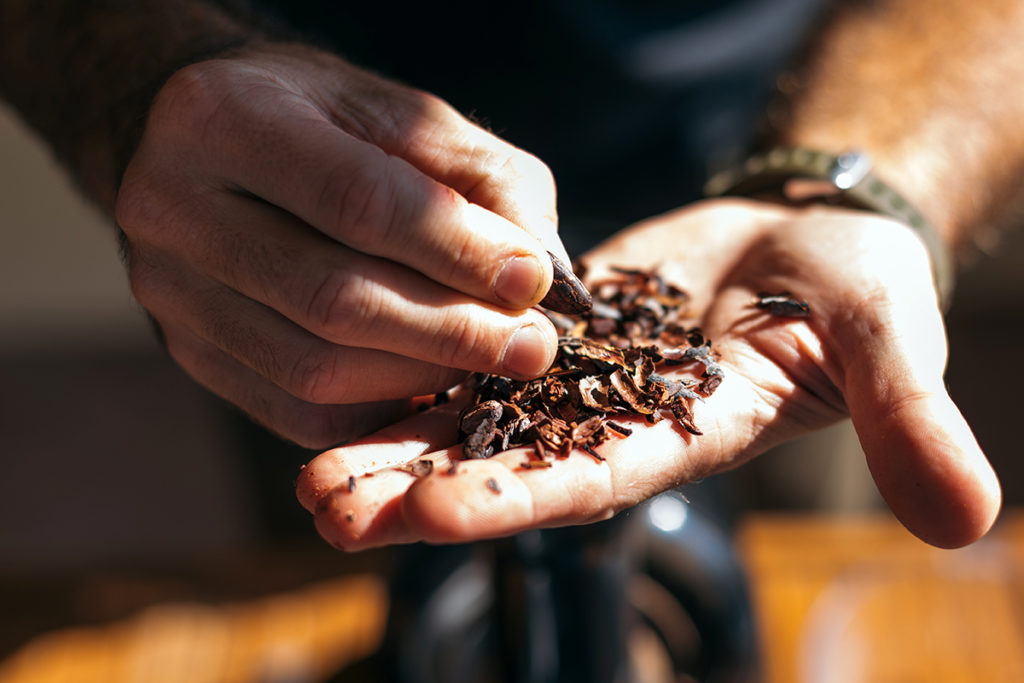
“That was another thing that made me strongly think about this opportunity. The cacao beans were definitely world-class; really good or at least really interesting, considering I didn’t really know the farmers personally,” he says. Right now, the colors and textures of Mastrota’s cacaos come from Davao, with each bar named after the locations where the beans are sourced, whether it’s a single farm such as Sto. Tomas in Davao del Norte or a cooperative like the Sta. Maria from Davao Occidental, which is a group of 30 to 40 little farms that get together to produce beans. Because Mastrota foregoes ingredients other than cacao and sugar, much of his bars’ strength lies in the specificity of their origin.
He is also thinking about the future of La Union by working with local farmers to bring a new product to life: the province’s first ever bean-to-bar chocolate. “I made some bars using cacao from Bacnotan just for fun and it was interesting.” A few tweaks to the fermentation process and in the tree growing patterns and his little experimentation could lead to a profitable potential for the town.
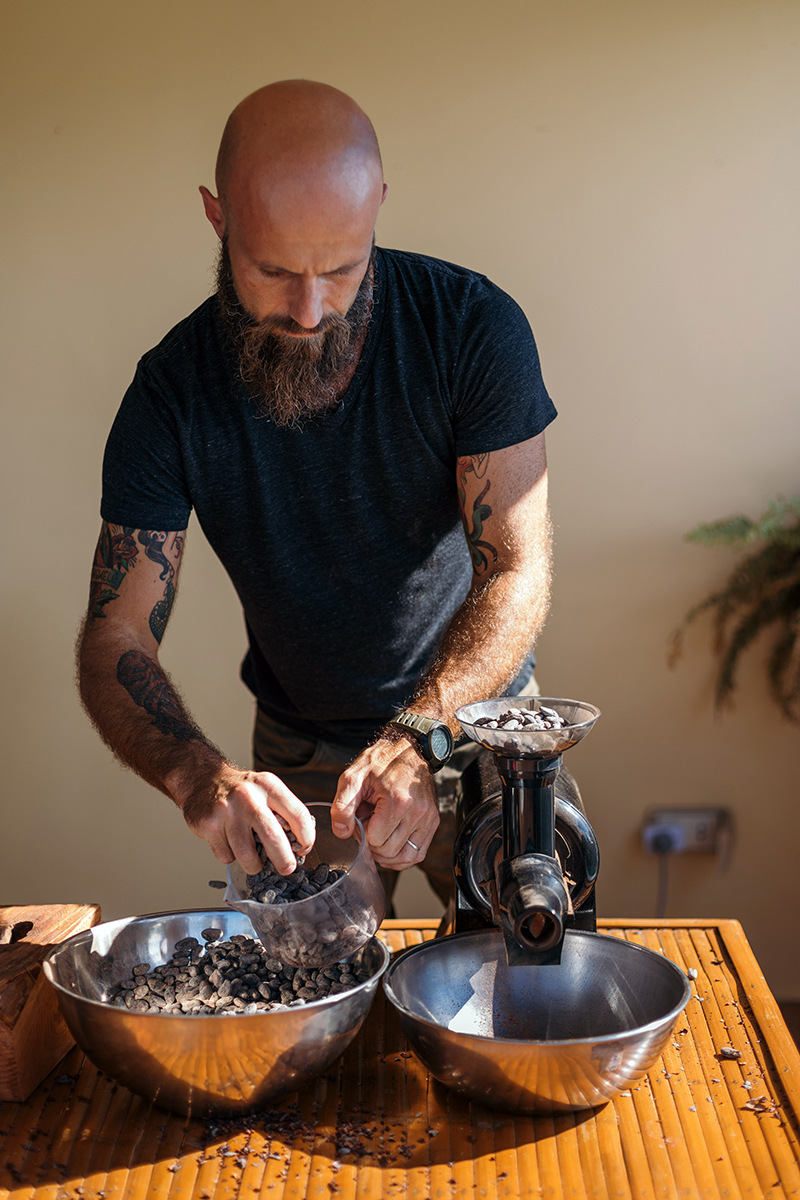
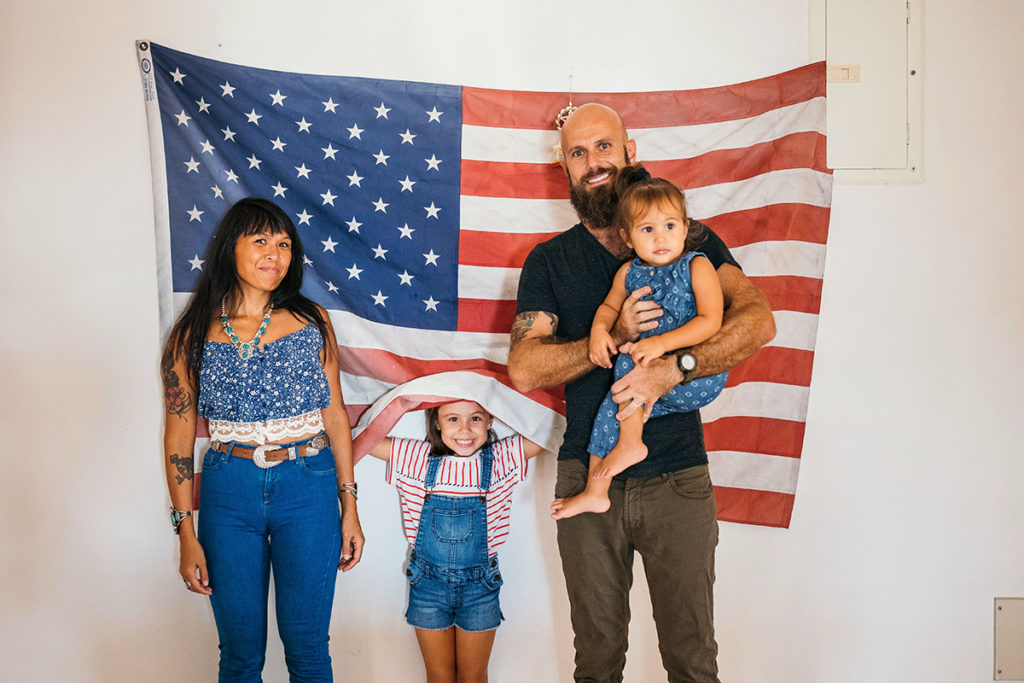
For now though, the primary goal of Tigre y Oliva is to increase production from 1,000 bars to 2,000 every month, which is a tall task for Mastrota, who does everything himself. But his vision to put the Philippines on the map and be part of the global movement is still strong and formidable.
Tame the flame
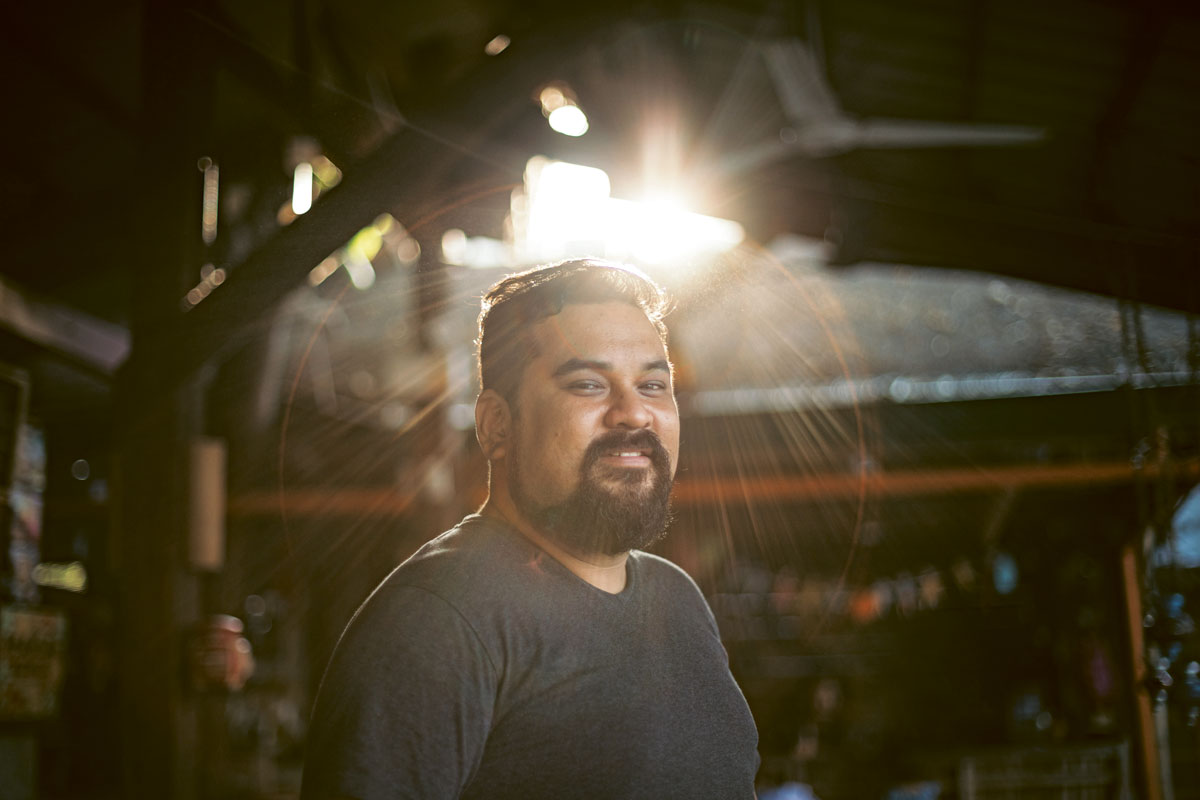
As with many gentrification processes, the threat of fast changes is always present. Which is why sustainability is a key factor in how entrepreneurs are running not just their businesses but the whole town as well. “[Gentrification] can be good as long as it’s managed properly,” says Denny Antonino who is set to open his highly anticipated smokehouse Papa Bear in June. “I’d like to see more resorts here use proper blackwater systems to filter their sewage.”
For his part, Antonino sticks to an ethos that reinvigorates the entire supply chain. “I want to help the farmers and source black rice from them. I don’t mind paying a little more than what they sell to distributors since they kind of get the raw end of the deal.”
As with many gentrification processes, the threat of fast changes is always present. Which is why sustainability is a key factor in how entrepreneurs are running not just their businesses but the whole town as well
Papa Bear is the result of a broken heart leading to creative catharsis: Antonino underwent double angioplasty at 36. “Getting sick like that changed my frame of mind so I thought of other things.”
The thrust at Papa Bear is reimagining the smokehouse concept. The menu uses American smoking techniques but with Asian ingredients and flavors, as Antonino believes in wrestling with the blind spots of Manila’s smokehouses. “Most of them import their wood, which isn’t exactly eco-friendly. My plan is to see what I can use here like local fruit wood or coconut charcoal. Ideally, I’d like to work with native black pig. It’s rather tasty and lends itself well to low and slow cooking.”
Strong foundation
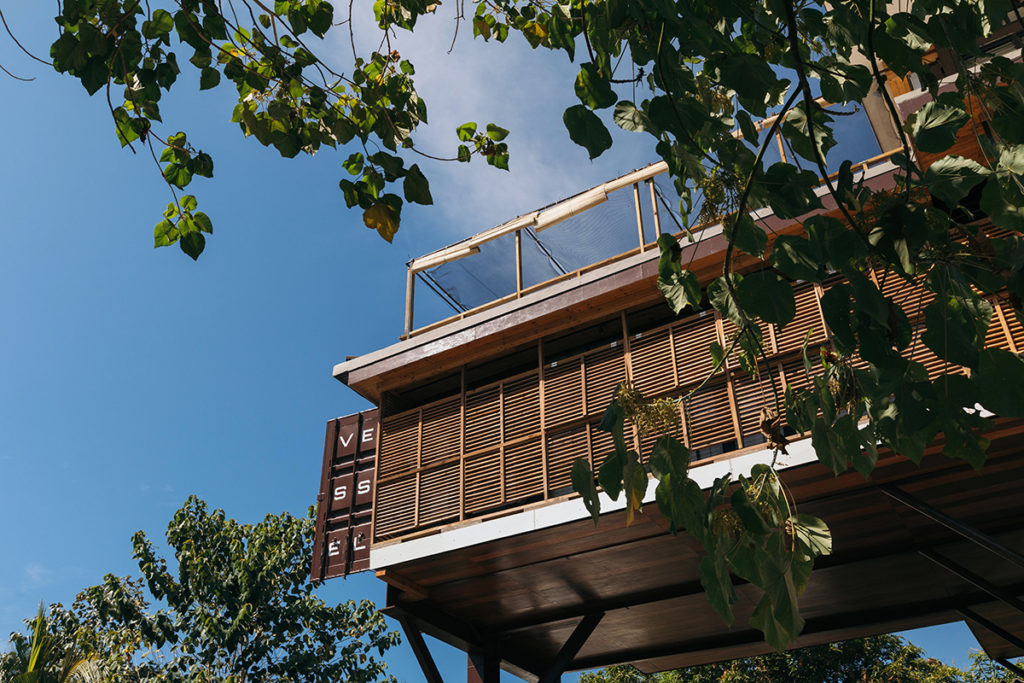
There is another, more architectural story that is defining La Union’s progress. Vessel Hostel, which sits on a scenic point of the town and was once fondly referred to by residents as an alien ship, symbolizes a new beginning on the hospitality front. Built by prolific tandem Buji and Nikki Libarnes, Vessel Hostel exhibits what can be done in a bustling town with a smaller footprint. Much of the hostel is built on repurposing old objects: four 20-foot containers on the second floor house private rooms and two 40-foot containers on the third floor hold the bigger dorms. But the key part of Vessel’s story started when the Libarnes decided to build their house.
There is another, more architectural story that is defining La Union’s progress. Vessel Hostel, which sits on a scenic point of the town and was once fondly referred to by residents as an alien ship, symbolizes a new beginning on the hospitality front
“When we bought the property, there was a 20-foot container left by the previous owner so we decided to move it a few feet and asked the locals to help us carry it. We then built the house from that container,” Buji says. “I just left 50 square meters of free space at the back for a garden or a business in the future.” After completing their unique house, the Libarnes gradually added the hostel in stages, organically sculpting it out of their home and eventually seeing the vision come to life early this year.
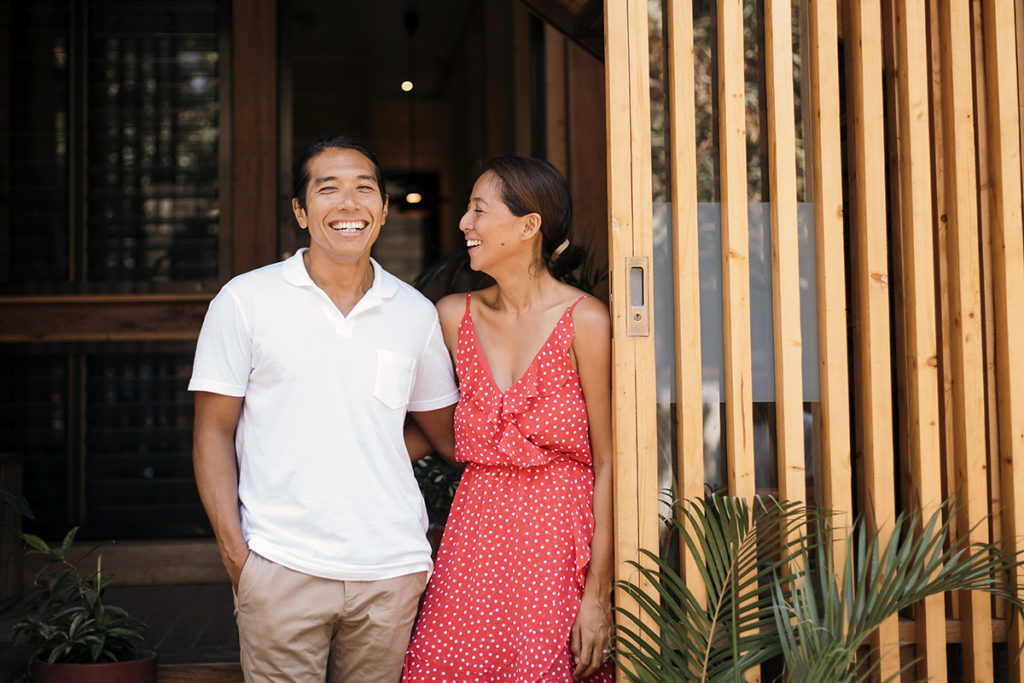
But more striking than the artistic small-scale hostel’s form is its smart, sustainable design teetering between Japanese minimalism and smooth retro stylings. “Most of the wood is also recycled, ’yung mga paleta lang. We also tried to factor in passive lighting and cooling; hence a lot of jalousies let in 100 percent of the wind,” says Buji, adding that the water from air-conditioning is also used to water the plants.
From the recycled palochina and louver blocks to the lattice walls that recall the hypernostalgic vibe of the ’50s and ’60s, it’s an elastic landscape that shows how good vintage design can marry the town’s past with a green future
Climb to the top of the hostel and the Libarnes’ design influences are evident in every direction. From the recycled palochina and louver blocks to the lattice walls that recall the hypernostalgic vibe of the ’50s and ’60s, it’s an elastic landscape that shows how good vintage design can marry the town’s past with a green future.
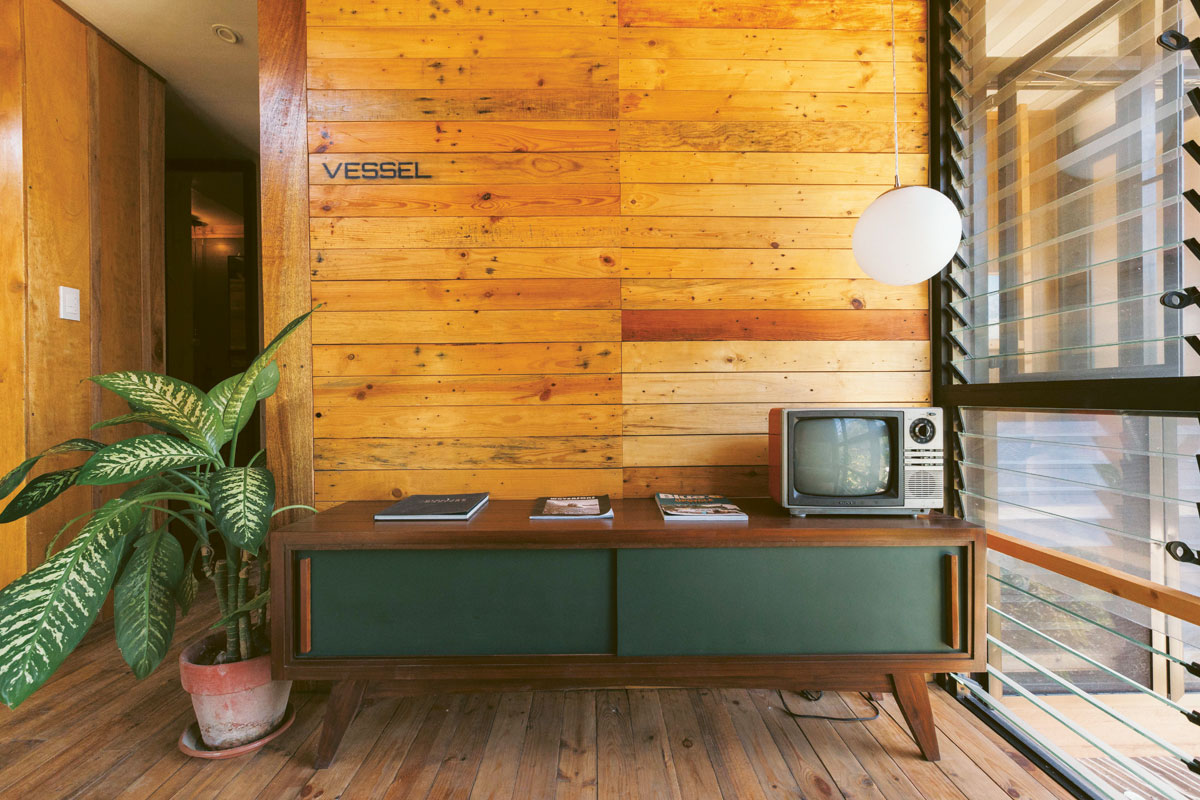
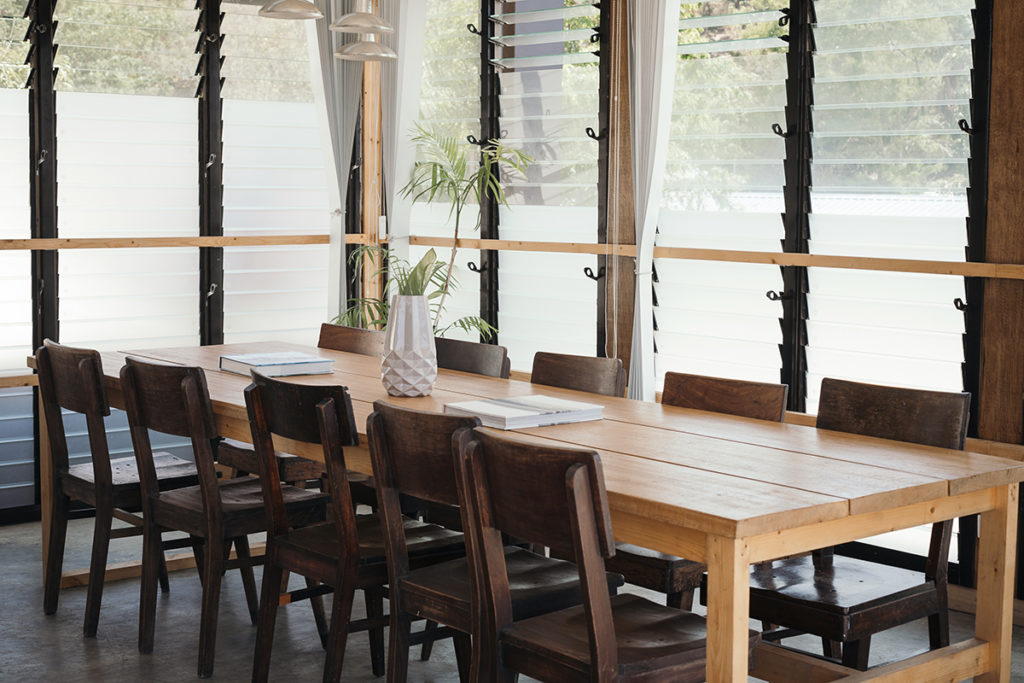

In its own way, Vessel Hostel is as much a statement to the direction most of the entrepreneurs in La Union are heading as it is a definition of the couple’s reasons of relocating to the province. “Most of the business people here started out as surfers who frequent La Union. Then they fell in love with the place so they had to find a way to sustain the lifestyle they want,” says Buji. “Surfing simplifies your life. It reduces your needs to the basic stuff.”
“That’s what we love about La Union, too. The sense of community here is very strong,” says Nikki, presenting the fact that all three of their staff members, an all-around handyman, and even the neighbors are very much a part of the hostel’s symbiotic relationship with the town. “And we try to support local industries, too.” Surfboard rentals and lessons are passed on to locals; laundry is outsourced to a local laundromat lovingly called Wash Me Nae Nae, which uses eco-friendly soaps.
La Union’s self-aware, matter-of-fact approach to the sheer change of pace is central to the speedy evolution of the province’s identity. Agriculture and tourism have always been a source of pride, but with tourist arrivals expected to rise this year—numbers reached nearly 300,000 in 2015—owing to the infrastructure developments set in Northern and Central Luzon, the abundance of Manila entrepreneurs launching businesses here is electrifying La Union’s fledgling F&B scene.
There’s an entrenched reality at play here making it apparent that La Union has found its ideal—and what an ideal it is.
Originally published in F&B Report Vol. 14 No. 3

